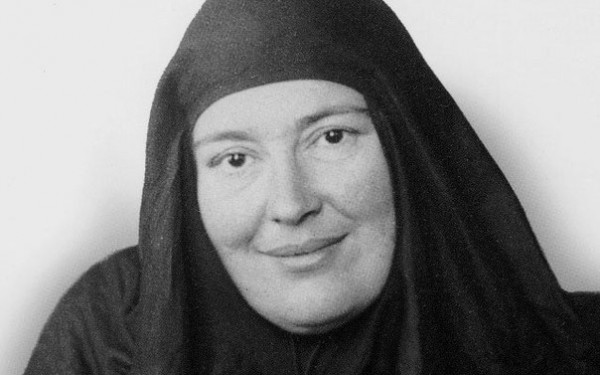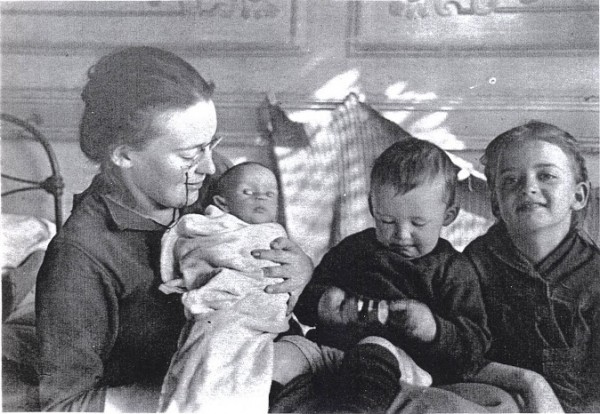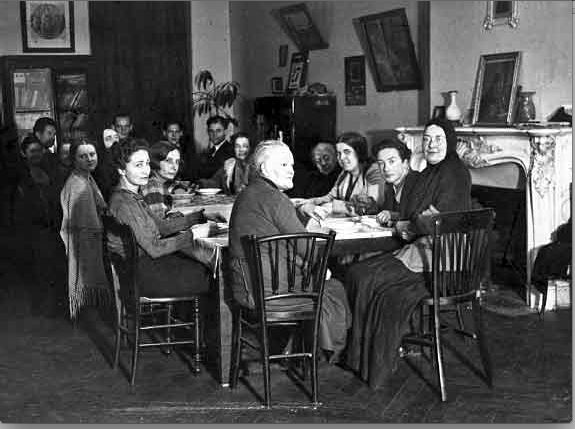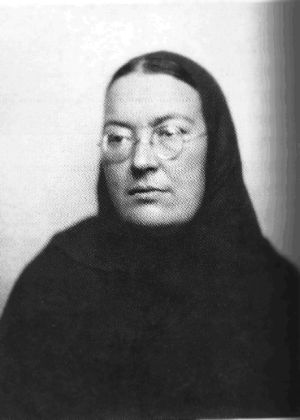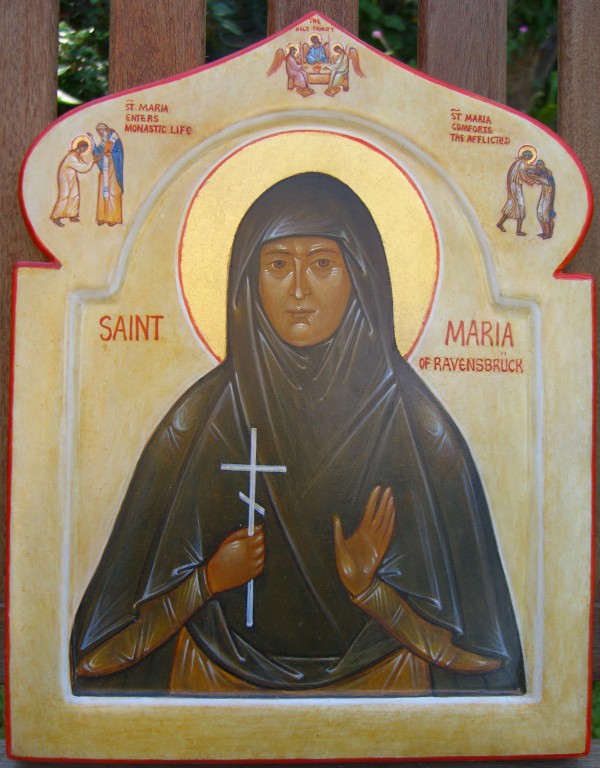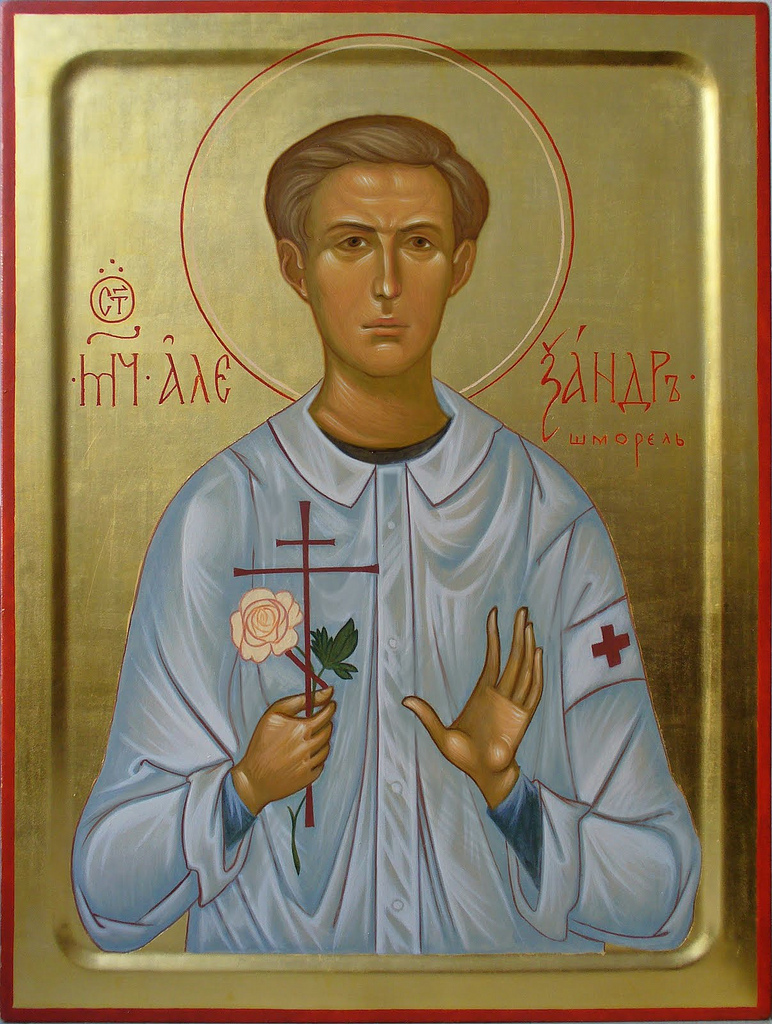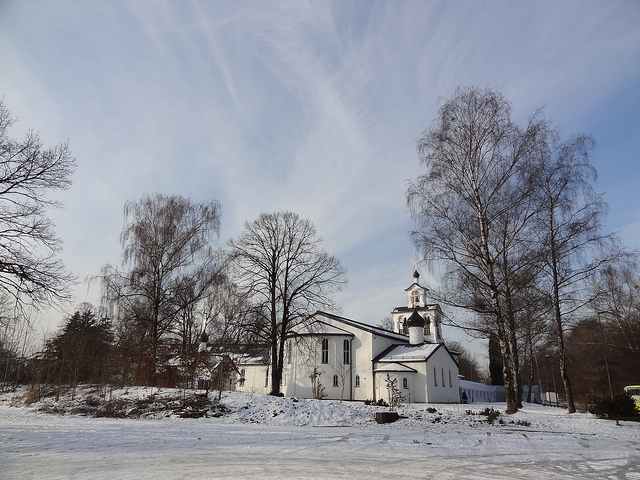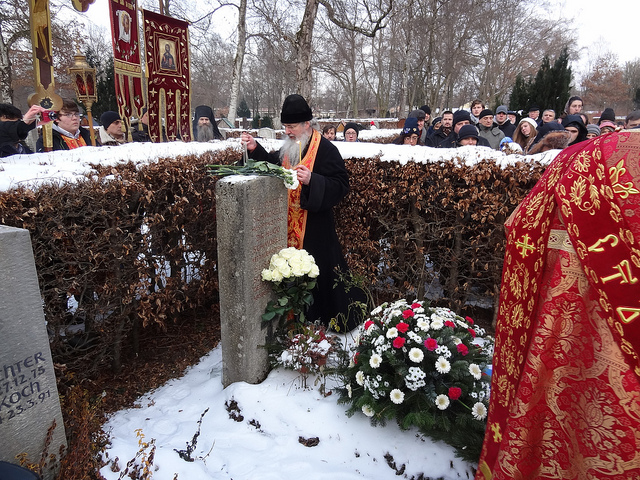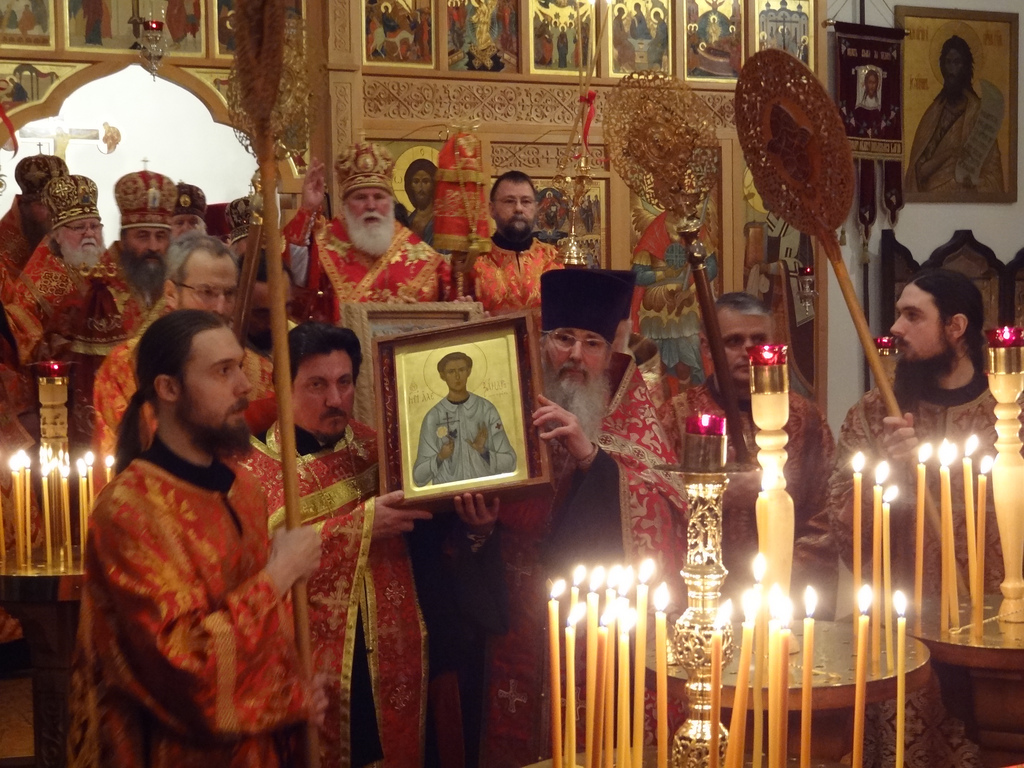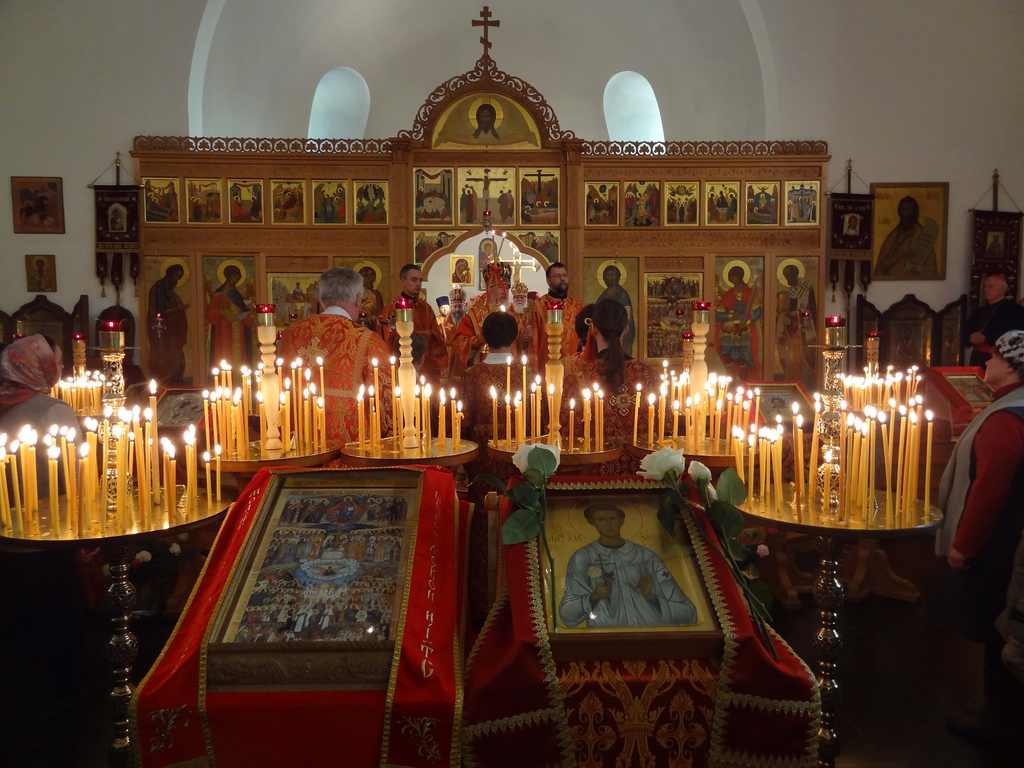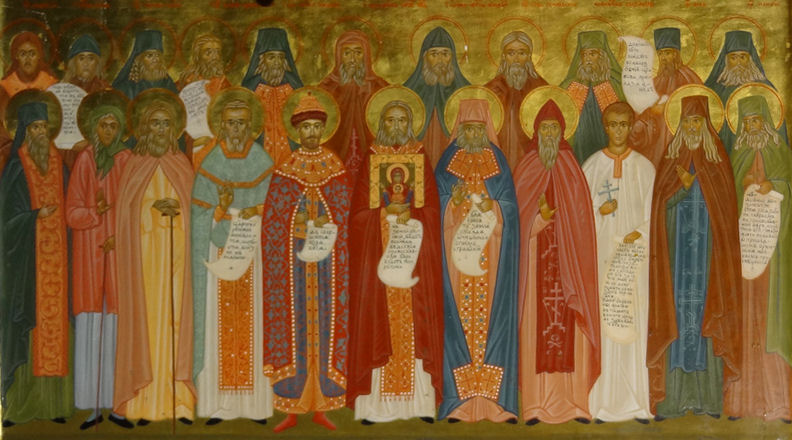ARCHBISHOP JUSTIN WELBY
ON EVANGELISATION
The Archbishop of Canterbury has set out his vision for a Church in which every Christian shares "the revolutionary love" of Jesus Christ.
"The best decision anyone can ever make is to be a follower of Jesus Christ." Archbishop Justin Welby, Lambeth Palace, 5 March 2015. (Photo: Lambeth Palace)
The Archbishop was giving the inaugural Lambeth Lecture, a new series of talks which will feature guest speakers addressing key issues for the Church.
The Archbishop of Canterbury's Lambeth Lecture
Lambeth Palace, 4th March 2015
I want to start by saying just two simple sentences about the church. First, the church exists to worship God in Jesus Christ.
Second, the Church exists to make new disciples of Jesus Christ. Everything else is decoration. Some of it may be very necessary, useful, or wonderful decoration – but it’s decoration.
When I talk about making disciples as we go through, of course I’m not only talking about words; I’m also talking about actions, and we’ll come back to that in a little while.
The best decision anyone can ever make, at any point in life, in any circumstances, whoever they are, wherever they are, whatever they are, is to become a disciple of Jesus Christ. There is no better decision for a human being in this life, any human being.
When I started this role a couple of years ago, after some prayer and thought and reflection, three priorities, in the period between the announcement and when I got going as it were, lodged themselves in my mind. These were the three. First of all, prayer and the renewal of the Religious life. And my guess is that there were nods of assent and interest but hardly surprise.
At the news that reconciliation was my second priority there was probably mild interest and murmurs of approval that this was a Good Thing, but that someone was going to have their work cut out.
When I introduced my third priority as evangelism and witness I imagine some, maybe a minority, were high-fiving, while others stopped and stared into space with a look of horror, thinking, ‘Oh golly, here we go again’. I won’t ask you which group you fall into.
This evening it’s that priority that I want to talk about. To make the case for it not just a priority for any old spare Archbishop with not enough to do; but as the priority of the church of Jesus Christ, something which is testified to in the first of the Five Marks of Mission of the Anglican Church: ‘To proclaim the Good News of the Kingdom.’
I’ll try to define my terms, then set this in the context of what the Church is called to, and from there I hope to approach the scope and motives of evangelism, before addressing some of practice.
I will then seek to root this in the life and witness of the local church and most specifically in the life and witness of every Christian – not only the professionals.
This is our particular passion, priority and focus. In fact all we endeavour to do is done with the intention that we serve and enable the lives of every follower of Jesus to be faithful witnesses to the transforming love of God.
I am under no illusion as to the seismic shift that needs to take place in order for this to happen. But a seismic shift is what we need. For this country will not know of the revolutionary love of Christ by church structures or clergy, but by the witness of every single Christian.
Of course there were others words available to avoid the dreaded ‘e’ word of evangelism. Why not talk of ‘mission’? It’s so much more inclusive and encompassing, and something we are all, me included, passionate about. That was my reason for steering away from it.
I have nothing against mission – quite the reverse: the recent renewal of the Church’s appropriation of the term has been heartening. But such is the widespread use of the term that my sense of this talk being committed to mission would be to say that I was committed to everything.
No, I wanted the call to be focussed on the specific proclamation of the Good News. What does it look like for the Church in this country to find its voice in these days?
There is obviously a huge amount that has been written about the content of the Good News, the Gospel, and there’s a good amount more that will be. We will never plumb the depths of the wonder of the Gospel; there will always be more to be said.
I am not going to enter that debate, apart from saying that the Gospel is the Good News of Jesus Christ. It’s the announcement of a person in history, and what God has done in this one life for everyone who has ever lived and ever will live.
I wonder if I might use a painting to represent the Gospel. The painting is The Calling of Saint Matthew and was painted by Caravaggio in around 1599. Art historian Sir Kenneth Clark considered it the piece of art that changed the history of painting:
It’s a representation of the scene in Matthew’s Gospel (Chapter 9) when Jesus calls the tax collector Matthew to follow him. The painting shows Matthew in the middle surrounded by four colleagues.
Notice the finery of those around the table in contrast to Jesus and Peter’s clothing and bare feet on the right. Two of the tax collectors, at the far left of the picture, do not even look up, so intent are they on counting their money.
Between these five men and Jesus you will notice a barrier of darkness. All the light has come in with Jesus – the figure on the far right of the picture – as you will notice that from him, and not the window in which we see the cross, the light is coming.
Evangelism is the Good News of the coming of Jesus Christ into this dark world. And it is news not simply because without this light we are in the dark, but also because it comes to us unwarranted, unsought, without our initiation.
Jesus comes to us. This is the free work of God to bring light into the darkness. It’s not technique, it’s not manipulation, it’s not organisation, it’s not systems… it’s God. It’s raw God.
The men in the picture were not looking for Jesus; He came to them and transformed their world. In fact He caused great disruption. Jesus is the light of every person; He comes to all and for all. Apart from him there is only darkness. He comes not just to those who might seek him, or to those who have an interest in that kind of thing.
Caravaggio brings the drama into the painting through the outstretched hand of Jesus. This hand singles out Matthew. It’s a definite choosing – a particular invitation. Jesus comes and reaches out to each of us.
And those who first saw the painting could be in no doubt as to what Caravaggio was implying – notice the similarity between the hand of Jesus and the hands in his scene from the roof of the Sistine chapel.
The hand of Jesus is both the hand of the second true Adam and of God. The Gospel is the call of God himself through the true man Jesus Christ. It is an act of creation, and recreation; a bringing into being, a life-giving calling, which is only possible because of the initiative of God.
We do not bring about this alteration, but it has been accomplished – it is done – apart from us, in the death and resurrection of Jesus. We did not contribute to it; but we are alive because of it.
We all know that. But it is as we get hold of that truth that we are impelled outwards into the world. Because it’s as that truth grabs us that we remember that this isn’t us, it’s God. This is no survival strategy for the Church. It’s God. It’s raw God.
Matthew clearly can’t quite believe that this invitation and command are addressed to him. Could he be so lucky? Surely there has been some mistake. You can see him thinking that – ‘Me? What, me? You’re kidding. Wrong guy. There’s another Matthew down the road.’ What on earth could he have done to have warranted this action of God on his behalf?
Pope Francis said: "That finger of Jesus, pointing at Matthew. That’s me. I feel like him. Like Matthew. It is the gesture of Matthew that strikes me: he holds on to his money as if to say, ‘No, not me! No, this money is mine.’ Here, this is me, a sinner on whom the Lord has turned his gaze.”
Does that ring bells with people? That beautiful, wonderful moment when you realise that Jesus looks on you, on me, and doesn’t hate, doesn’t despise, is not indifferent, but utterly compelled and compelling in love, says ‘follow me’.
As a Christian it is my deepest conviction that in Jesus Christ, God comes to call every one He has made. Everyone has been summoned in Jesus Christ. For in Jesus Christ, God has poured out his love and his grace, his forgiveness and his mercy, his faithfulness. God would not be doing this without you or I.
Evangelism is then a joyful proclamation of what has happened. It’s the news of Jesus Christ. His life as the light breaking into this dark world for us. His death as the fount of our redemption. His resurrection as the hope of all. This news must be told, or how will people know?
We live in a world where hope is in increasingly short supply. Cynicism about politics is the opposite of hope. Fear is the opposite of hope. Where there is no hope we turn on each other to give ourselves security – temporarily, briefly. When we’re filled with hope, all things become manageable, even the greatest fears. Who can keep quiet about such a fact?
In 1525 William Tyndale, rumoured at one point to have been locked up by one of my predecessors in a tower at the top there, said this: ‘Euangelio (that we call gospel) is a greke word, and signifyth good, merry, glad and joyful tidings, that maketh a mannes hert glad, and maketh hym synge, daunce, and leepe for joye.’
But before I join Peter and continue Jesus’ ministry of calling everyone to follow, I must be one myself who has heard the call. I am a recipient of this light that has broken into my darkness. It is as one who has received that I offer this gift.
This requires my constant, daily conversion. One of the great phrases of Ignatian spirituality is the call to daily conversion. To receive daily, as Cyprian termed it, ‘one great gulp of grace’.
For me, grace is the most beautiful word in the English language. It is so evocative of all. The fact that the Gospel comes afresh to me as a sinner and astounds me with the news that I am loved, accepted, forgiven, redeemed and chosen in Jesus Christ.
My spiritual director came here on Tuesday, an extraordinary Swiss monk with whom I speak from time to time, and he celebrated Mass down in the Crypt Chapel. It was a wonderful moment when those among us who are not Catholics received a blessing and the Catholics received the Eucharist – the opposite to what has been the normal pattern here. And we felt that pain of the Church’s separation.
And he spoke and he said: “We can do nothing except by grace.” It’s his great phrase: “C’est tout grâce.” It is all grace.
Each day the Gospel comes afresh to me as a sinner and astounds me with the news that I am loved, accepted, forgiven, redeemed and chosen in Jesus.
We must open ourselves and the Church to the continual conversion which the Spirit works in us. The Church must continually be converted from the reduction of the Gospel into its fullness.
We cannot leave things as they are, but we experienced grace best by bowing before it and allowing it, every time, to begin with us as though it were for the first time. Even tonight I must receive His grace again.
And if every Christian knew only to receive His grace afresh each day, what transformation would there be? That we can do.
Having received the goodness of God in Jesus Christ it obviously becomes a priority for us as his Church to let others know of what God has done for them.
Of course the church is called to orientate everything around God – that is called worship. But because of who this God is, we are also compelled to be for others the Good News that made this community and instructs this community.
While the Church always exists in time and space, in a locality with particular people, in a particular culture, it is this particular Church. Wonderfully this is God’s work, done by His Spirit. And God initiates this in every church, in every place.
I was, as you might know, Bishop of Durham for a few minutes. My predecessor was Tom Wright. He has the most helpful analogy as to the work of the Church. Imagine a new Shakespeare play was discovered, but it only had four acts and the last one was missing.
What would we do? It wouldn’t simply be discarded. We would call on the greatest directors and producers, the finest actors, to immerse themselves in the first four acts and to engage with the plot and development, and to work together on what the fifth act might be.
This is the position of the Church. We have the first four acts, we have the plot and characters, and now it’s over to us.
But we are not left alone. The director, the artistic producer, the prompt and writer with us is the Holy Spirit. It’s the Spirit that makes the Church, every day, afresh.
In this fifth act, what does the Spirit compel us to do? To invite people to become, like ourselves, participants in the drama of God.
Karl Barth, one of the greatest theologians of the 20th century said this: ‘No other task is so urgent as that of spreading the news on earth and making it known.’
It is God’s initiative. We cannot as his Church proclaim his Good News in our own strength or inspiration. The Spirit goes before us, preparing the ground for the seed. Of course the wine of the Spirit takes the form of the wineskin, and so we as a Church must do the job of clearing ground of thistles and weeds, or rocks and trodden-down paths. But only the Spirit makes it possible.
A few years ago I heard it reported that it was the practice in large supermarkets to pump through the air conditioning system the smells from the bakery. So on entering the shop we, the unsuspecting public, would be met by the aroma of freshly baked bread, and we would therefore desire bread.
It seems to me this is a rather unsophisticated way of interpreting one of the crucial drivers of the New Testament when it comes to evangelism: it’s the work of the Spirit, the ‘go-between God’ [Taylor], to prepare the hearts, desires, minds and senses of people that they might receive the message of God. It’s why we pray – that God would prepare.
Simon Tugwell, a Roman Catholic charismatic theologian was one of those who coined the title of ‘the speech-giving Spirit’ for the Holy Spirit. The Spirit enables the joyful proclamation of the Church, in the telling of the Good News of Jesus Christ – news that is literally ‘new’ to people.
Tugwell traced the early Christian tradition that linked salvation to the opening of the mouth by the Holy Spirit. Again the New Testament sets this out: it’s the Spirit that calls us to say “Abba father” and “Jesus is Lord”. But why do this?
We know how important motives are in detail and the big picture. Gandhi said: “The moment there is suspicion about a person’s motives, everything he does becomes tainted.”
How often have we looked at the Church and wondered what they’re really up to? Or we’re really up to? Or I’m really up to?
Yet the Church gets so many reputations for mixed motivation.
Talleyrand, the great French diplomat, who managed to work for the French royal family until the Revolution in 1789, to work for the Revolutionaries, to work for Napoleon, and to come back to working for the French royal family in 1815 at the Congress of Vienna, died at the Congress of Vienna. And when Metternich, the Austrian Chancellor, was so clever at his manoeuvring that he was told that Talleyrand had died he said: ‘Hmm, what does he mean by that?” [laughter]
Our motive driving this priority for the Church is not, not, not – never, never, never – that numbers are looking fairly low and the future is looking fairly bleak. Never. This is not a survival strategy.
This is not to say I am in any way nonchalant about the seismic challenge facing the church. But evangelism is not a growth strategy.
Of course we want to see full churches. But this is not anxiety for an institution, or worst still self-survival.
Martin Luther’s definition of sin as a heart curved in on itself is instructive for us here. The Church which is concerned primarily for its own life or survival, a church that is curved in on itself, is signing its own death warrant.
As the wonderful missiologist Lesslie Newbigin said: ‘A church that exists only for itself and its own enlargement is a witness against the gospel.’ One could say both a lack of action and too much frantic action thinly mask a lack of confidence in the sufficiency of God.
What compels this priority is the same motive that compelled the first proclaimers; that compelled Archbishop William Temple’s great report in 1945, ‘Towards the conversion of England’; that compelled evangelist Billy Graham; that compelled the decade of evangelism; and all the reports and publications from the General Synod; and Pope Francis’ wonderful encyclical Evangelii Gaudium.
It is summed up in 2 Corinthians 5: 14-15: ‘For Christ’s love compels us, because we are convinced that one died for all, and therefore all died. And He died for all, that those who live should no longer live for themselves but for Him who died for them and was raised again.’
It is the love of Christ that compels us. Every time I think of that, I reflect on how often I have failed to act in the love of Christ, and how unsurprising therefore that there is little response.
Everyone has a right to hear the Gospel, and as Christians we have a duty to proclaim the Good News without excluding anyone.
The only qualification for hearing the Good News is that you don’t know Christ – and that’s not just good news; it’s true news. Indeed it’s only because it’s true that it’s good. And if it’s true, it’s true for all, and must not be concealed from any.
The love that has found us in Christ compels, or constrains us to speak. So does our love for everyone God has made.
John Chrysostom, Archbishop of Constantinople who died in 407AD, said something similar:
“Nothing is more deadly than a Christian who is indifferent to the salvation of others. Indeed I wonder if such a person can be a true Christian. To become a disciple of Christ is to obey his law of love; and obedience to the law brings joy beyond measure and description. Love means to want the best for others, sharing with them the joy of love. So the Christian feels compelled to speak to others about the law of love, and the joy of obeying this law. Of course, many people are shy about speaking to others; in their case actions motivated by love will be a most eloquent testimony. But those who are not shy will surely want to express their joy at every opportunity. There is no need to use fine words or elegant phrases.”
The Gospel is anything but formulaic. Becky Pippert says: ‘evangelism is not memorising techniques to use on unsuspecting victims.’ Nor is it an inter-church competition – and yet we make it so. But it is God who does it.
The same Spirit who gives us speech enables the proclamation of the Gospel to be always fresh and always distinct. This is the Spirit who, as Eugene Peterson says, ‘always has an address’.
At Pentecost, the speech-giving Spirit enables the news of all that has been opened up to be proclaimed in a tangible and comprehendible way. This is a gospel, Luke is saying to us, for the whole world.
If the Gospel is best and most authentically spoken from person to person in a way which is particular to the hearer, as at Pentecost, the task of translating the gospel into graspable words and concepts is essential. And the process of gospel translation is profoundly interactive. We don’t simply arrive with a set of words grammatically related, or a system of ideas. It is a story that makes history, and we must pay attention to what God is already doing and stirring, for God’s work does not begin with us. It begins with him.
In every respect Jesus Christ is the plumb line for our announcing, for he remains not just the central fact of the Christian faith, but the determining point.
Our constant care must be to proclaim the Good News in ways that are appropriate and fitting to Jesus. It’s obvious, but so often we fit it to what we need. Like the bed in the ancient legend of Procrustes – when he had guests at his castle, if they were too short for the bed, he’d put them on a rack to stretch them, if they were too long he’d cut them down to size.
So often we want to fit people who are not Christians into our church, not make the church fit for new Christians.
The Gospel can be proclaimed in a way that denies the very one it proclaims. We can do the right thing in such a wrong way that it becomes the wrong thing. Anything manipulative or coercive, anything disrespectful or controlling, is ruled out because of who Jesus is.
Having said that, it is clear that God gloriously puts up with all kinds of ways of announcing the Good News which are less than ideal. For example, he uses me. [Laughter]
Having insisted that we take care to speak the Good News in ways that are good news, I am persuaded that the confession of faith in all languages and to all cultures is possible because of the distinctive character of God’s action.
Christian good news must not become bad news for people of other faiths, but we must not shy away from true engagement.
It is not unethical to present the Gospel with love, grace and gentleness borne of true assurance. The privilege of living in a free and mature democracy is that we can both be held accountable for what we do and what we profess, while having the freedom to pray expectantly and to speak intentionally of what we know to be the transforming love of Christ.
That is a freedom to cling to. If our motivation is truly of love and of divine calling, then we must share our experience of Christ with one and all.
Having laid out the motive for evangelism, let us think about how we might go about it.
The old adage is attributed to St Francis of Assisi: “Preach the gospel at all times, where necessary use words.” Lay it aside, put it down, forget it. Don’t even think about it. Mainly for the reasons that he almost certainly didn’t say it, and even if he did, he was wrong. As T.S. Eliot’s character Sweeney said: “I gotta use words when I talk to you.”
But in order to know how to speak and proclaim, we must listen and converse. We are those who have listened to the Gospel, and our reception of the Good News has formed us.
Luke Bretherton of Duke University in North Carolina says this:
“The merciful command to listen first is ever present, as we cannot presume to know what needs to be said and done with these people, in this place, at this time if they are to truly hear and dwell within the Gospel. Listening to God and neighbor is the prerequisite of proclaiming the Word that, as a human word, can only be heard in dialect.”
The listening and speaking to God is where we start. This is God’s work. Ears only open, eyes only see, hearts only open, hands only receive when the Spirit works. At my installation service the anthem sung took early words from the Rule of St Benedict: “Listen, listen O my child…”
The importance of prayer cannot be overestimated. As St Paul testifies: “I planted the seed, Apollos watered it, but God has made it grow.” [1 Corinthians 3: 6]
In prayer we actively acknowledge that and practice it, by imploring the Spirit to work powerfully before and behind us, in our stumbling words and efforts.
The subject of Paul’s prayer in Ephesians 3 is that his friends “may have power, together with all God’s people, to grasp how wide and long and high and deep is the love of Christ, and to know that love that surpasses knowledge”.
For example, there is no evidence of any revival of spiritual life taking place in a society in the Western Christian tradition without the renewal of prayer and the Religious life. How much more would the Lord do if we do but ask Him?
Hospitality, openness and a deep desire to love and accept the other who has not heard and responded to the gospel are fundamental to our proclamation.
At times I wonder about Bonhoeffer’s letter to Eberhard Bethge, in which he set out the idea that common theological language is so misunderstood we could do with ceasing to use it for a generation and then reintroducing it to fresh ears – so that we might be able to define our terms without any of the baggage these words have accumulated. Words like ‘evangelism’, ‘evangelical’, ‘gospel’, and so on and so forth.
However, that’s not what we can do. Wherever we bring the Gospel, we are certain that we do not know the full implications of what it means to say: “Christ has died, Christ is risen and Christ will come again.” And when we set forth the Gospel invite, there are always fresh nuances and gifts for us to receive in how each person receives it.
Years ago, in a church we were worshipping at, there was someone who came to Christ quite unexpectedly. The impact of that on that church was profound. The vicar found a whole new desire to evangelise, as he saw the transformation in that person’s life, which he has never lost since. And this was well over 20 years ago. [That person] struggled with faith, but so many people saw what it was to become a Christian and therefore saw their own hope that they had.
The best evangelism takes place when the evangelist and the evangelised learn something new about Christ.
Anything that is tired or worn, blasé or bland, hasn’t begun to cope with the Gospel. The Spirit inspires us to greater and more inspiring creativity and imagination, co-opting every medium possible to extend the invitation, always compelling, definitely arresting – calling on all our senses to be open to His love.
Having said that the Gospel is profoundly personal, I want to mention the corporate element.
The Gospel also has the most profound of public implications. Lesslie Newbigin again: “A serious commitment to evangelism means a radical questioning of the reigning assumptions of public life.”
That’s not a party political statement, just for the record. It is clear in many of the comments that are made regularly in the media that the Church’s basis of faith is not grasped. The starting place for all thought and action is Jesus Christ, who was, and is, and is to come. He cannot be accommodated or co-opted. We can’t say, “well we’ll put him on this to make it more attractive”.
The simple truth is that the resurrected one cannot be accommodated in any way of understanding the world unless He is the starting point.
And finally we think about those whose task it is to proclaim the Good News.
There are of course those who have the gift of setting this forward in ways which are most compelling and constraining. We call those people evangelists.
The church, however, is essential for evangelism. Not just in action and prayer, in activity and engagement, but as the place where the Gospel is seen to make sense.
The American theologian Reinhold Niebuhr asked in the middle of the last century why the lives of most Christians looked like celebrities who endorsed products you knew they didn’t use themselves.
And of course Pope Francis in Evangelii Gaudium said why is it that so many people go to evangelise looking as though they’ve just come from a funeral?
That is, why should people believe what we say about forgiveness and grace, reconciliation and sacrifice, love and commitment, welcome and acceptance, if when they look at the life of the Church they see something so diametrically opposed to it?
Lesslie Newbigin, as we know, said “the church is the hermeneutic of the gospel.” The tool of interpretation. For our words must be backed up by integrity.
The institutional life of the Church must reflect, enable, promote and speak of the Good News.
How does our structural life reflect and empower our proclamation? We must insist that all of our structures and committees, budgets (which are merely theology in numbers) and plans are appropriate to Jesus Christ, and the imperative to make him known.
What the Church has to do must not be determined by its institution; its institution must be determined by what it has to do. Evangelism is good for us, it is necessary for a healthy church, because by it the Gospel takes a fresh hold of us and Jesus Christ increases his presence and joy among us.
And that is a priority for every Christian. Luke says the last words of Jesus to the disciples: “You will receive power when the Holy Spirit comes upon you and you will be my witnesses.” [Acts 1: 8]
He is not describing what they’ll do – witness is not a verb, it is a noun. He is describing what they are. The question is not whether we want to be witnesses; it is whether we are faithful witnesses. We are all witnesses; it’s just whether we live that out. It is such a strong concept.
For a witness simply says what they have seen and experienced. We say what we know. Each witness is unique; no two witnesses can witness in the same way.
In 1945, the report which William Temple instigated came out, ‘Towards the conversion of England’. In it they were uncompromising: there would be no significant turning to God in the nation apart from the witness of every Christian. In 1985, the Church of England published the report, ‘All are called – Towards a theology of the laity’. It argued that by virtue of baptism every Christian was called to witness to Jesus Christ.
The man acclaimed as the best theologian in North America, Stanley Hauerwas, goes as far to say: “Witness names the truth that the only way we can know the character of the world, the only way we know ourselves, the only way we know God, is by one person telling another.”
Do our lives reflect that call? It’s the biggest hill for the Church to climb. That is the one that we have not cracked. Professional evangelists are wonderful; thank God for them. They are utterly necessary, totally essential – but they are not sufficient. Every Christian is required to be sufficient.
To go back to Chrysostom as we come the end:
“Don’t tell me ‘it is impossible for me to influence others.’ If you are a Christian, it is impossible for you NOT to influence others! Just as the elements that make up your human nature do not contradict each other, so also in this matter – it belongs to the very nature of a Christian that he influences others. So, do not offend God. If you say, ‘the sun cannot shine,’ you offend Him. If you say, ‘I, a Christian cannot be of service to others,’ you have offended Him and called Him a liar. It is easier for the sun not to shine than for a Christian not to do so. It is easier for light itself to be darkness than for a Christian not to give light. So don’t tell me it is impossible for you as a Christian to influence others, when it is the opposite that is impossible. Do not offend God. If we arrange our affairs in an orderly manner, these things will certainly follow quite naturally. It is impossible for a Christian’s light to lie concealed. So brilliant a lamp cannot be hidden.”
This is not easy or without cost for any of us. As we remind ourselves that the Greek word for witness is martyr, we are more and more, in these days, confronted with the fact that the word has come to have the associations it has with death, because of the price the first witnesses were prepared to pay to be faithful.
A couple of weeks ago we know 21 Christians were murdered in Libya. I was talking to Bishop Angaelos, the Coptic Bishop in England, who I went to see to offer condolence. He told me that from one who escaped they heard that as each one was killed, most savagely, they cried out, “Jesus Christ is Lord”. Their last words were witness.
As I finish let us return to Caravaggio’s painting. Notice, if you will, down at the bottom of the picture, another hand that mirrors the calling hand of Jesus. It’s that of Peter. You see him hesitant, not confidant, and seeming to look not at Matthew but one of his friends.
Jesus involves us in His work of calling people to follow him. This is the work of evangelism.
However weakly, however hesitantly, He calls us to extend our hands and our hearts, to use our words and lives, to echo His call to every person to follow Him.
For it is the best decision anyone can ever make is to be a follower of Jesus Christ. Amen.
Every video contributes to the theme. Please spend time in absorbing what is said. Read it. Digest it. Pray it.
THE RISE OF EVANGELICAL CATHOLICISM
by George Weigel
For more than thirty years it’s been my privilege to explore the Catholic Church in all its extraordinary variety and diversity. I’ve traveled from inner-city parishes to the corridors of the Vatican; from the barrios of Bogotá to the streets of Dublin; across the United States and throughout Europe, Latin America, Oceania, and the Holy Land. I’ve spoken to Catholics of all states of life and stations in life, from popes and heads of state to cloistered nuns and campus ministers and literally thousands of clergy; with political activists of all stripes and the wonderful people of the parish in which I’ve lived for almost three decades; with modern Catholic confessors and martyrs and with men and women who are troubled in their faith.
The experience has been exhilarating, sometimes exasperating, occasionally depressing; I’ve been immeasurably enriched by all of it, in ways I can never adequately repay. But I’ve tried to make a small down payment on a large debt with the publication of Evangelical Catholicism: Deep Reform in the 21st-Century Church . In the book, I’ve tried to focus what I’ve learned in more than thirty years of Catholic thinking, writing, and activism through two prisms: a new interpretation of modern Catholic history linked to a fresh proposal for how we should understand the Catholic possibility in the third millennium, and a detailed program of Gospel-centered reform that will equip the Church for its evangelical responsibilities in a time of great challenge.
The challenge can be defined simply: Throughout the Western world, the culture no longer carries the faith, because the culture has become increasingly hostile to the faith. Catholicism can no longer be absorbed by osmosis from the environment, for the environment has become toxic. So we can no longer sit back and assume that decent lives lived in conformity with the prevailing cultural norms will somehow convey the faith to our children and grandchildren and invite others to consider entering the Church.
No, in our new situation, Catholicism has to be proposed , and Catholicism has to be lived in radical fidelity to Christ and the Gospel. Recreational Catholicism”Catholicism as a traditional, leisure-time activity absorbing perhaps ninety minutes of one’s time on a weekend”is over. Full-time Catholicism”a Catholicism that, as the Second Vatican Council taught, infuses all of life and calls everyone in the Church to holiness and mission”is the only possible Catholicism in the twenty-first century.
The Evangelical Catholicism of the future is a Catholicism of radical conversion, deep fidelity, joyful discipleship, and courageous evangelism. Evangelical Catholics put friendship with the Lord Jesus at the center of everything: personal identity, relationships, activity. Evangelical Catholics strive for fidelity despite the wounds of sin, and do so through a daily encounter with the Word of God in the Bible and a regular embrace of Christ through a frequent reception of the sacraments. Evangelical Catholics experience dry seasons and dark nights, like everyone else; but they live through those experiences by finding their meaning in a deeper conformity to the Cross of Christ”on the far side of which is the unmatchable joy of Easter, the experience of which gives the people of the Church the courage to be Catholic. And evangelical Catholics measure the quality of their discipleship by whether, and to what extent, they give to others what they have been given: by the degree to which they deepen others’ friendship with the Lord Jesus Christ, or bring others to meet the unique savior of the world.
Evangelical Catholics enter mission territory every day, leading lives of integrity and charity that invite from others the question, “How can you live this way?” That question, in turn, allows the evangelical Catholic to fulfill the Great Commission by offering others the Gospel and the possibility of friendship with Jesus Christ. Having responded to the Risen Lord’s call to meet him in Galilee, evangelical Catholics go into the world in witness to the Christ who reveals both the face of the Merciful Father and the truth about our humanity.
Strong truths generously lived: that’s Evangelical Catholicism.
George Weigel is Distinguished Senior Fellow of the Ethics and Public Policy Center in Washington, D.C. His previous “On the Square” articles can be found in First Things .
MY COMMENTARY
This post is goes to the root of what Christianity is all about. I start with a talk given by Justin Welby who, although he is the Anglican Archbishop of Canterbury, could well have been expounding the teaching of Pope Francis. Four videos of Pope Francis follow, also on evangelisation and on the importance of bearing witness "in synergy with the Holy Spirit." . I use videos of Fr Robert Barron who gives us a commentary on Pope Francis and evangelisation. I also use N.T. Wright, the Anglican expert on the New Testament whom Fr Robert Barron calls the greatest scripture scholar alive. He tells us that the Church on earth and heaven are not two separate entities; but that they are two dimensions of the same kingdom. This leads me to a link with Fr Stephen Freeman who is a convert from Protestantism to Orthodoxy and who has a wonderful blog called "Glory to God for All Things." He tells us that heaven and earth are not like two storeys in a building, but that we form a single community with the angels and saints. This is why Our Lady, the angels and saints play such a large part in Catholic/Orthodox worship. The Protestant objections to that practice only make sense in a two-storey cosmos.Every video contributes to the theme. Please spend time in absorbing what is said. Read it. Digest it. Pray it.
SIMPLY GOOD NEWS
WHO DO YOU SAY I AM?
WHO ARE THE PEOPLE OF GOD?
MAGNIFICAT DAY: REFLECTIONS ON REVELATION 3:7
JESUS AND THE PEOPLE OF GOD
POPE FRANCIS AND THE NEW EVANGELISATION

